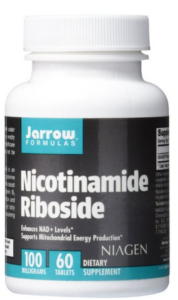In recent years, the quest for effective hair growth solutions has led scientists to explore various avenues, including the potential role of nicotinamide mononucleotide (NMN), a popular longevity nutrient. This article delves into a groundbreaking study published in the Journal of Molecules, which sheds light on the relationship between NMN and hair growth. Understanding the pros and cons of this research can provide valuable insights into this potential remedy for hair loss and thinning.
What is NMN?
Nicotinamide Mononucleotide (NMN) is a molecule naturally produced in the body. It is a derivative of vitamin B3 (niacin) but not the same as niacin. The vitamin niacin is crucial for the formation of NNM in cells. Nicotinamide mononucleotide has been shown to boost cellular levels of an energy molecule called NAD+ (NAD). Because of this, various studies have suggested that the supplement plays a role in:
- cellular energy production
- mitochondria function
- sirtuin activation
This has led some to believe NMN has the potential for anti-aging and cellular health effects. While animal research suggests benefits, human clinical trials show mixed results.
The Relationship Between NMN and NAD+
Nicotinamide mononucleotide (NMN) plays a pivotal role in the synthesis of nicotinamide adenine dinucleotide (NAD+), a coenzyme critical for various cellular functions. NAD+ serves as a vital substrate for enzymes involved in energy metabolism, DNA repair, and cellular signaling pathways. As cells age or face stressors, NAD+ levels decline, contributing to impaired cellular function and associated aging processes.
Nicotinamide mononucleotide exists in two forms – alpha and beta. Beta NMN is the active form and was used in this hair loss study.
Nicotinamide mononucleotide serves as a precursor to NAD+ synthesis, facilitating the replenishment of NAD+ pools within cells. Through a series of enzymatic reactions, NMN is converted into nicotinamide adenine dinucleotide (NAD+), thereby replenishing cellular NAD+ levels and supporting optimal cellular function. This relationship underscores the importance of NMN in maintaining cellular homeostasis and mitigating age-related decline.
What's the Difference Between NMN and Nicotinamide Riboside?

Nicotinamide riboside (NR) is another popular NAD booster supplement promoted to have anti-aging benefits. Nicotinamide riboside (sold under the brand TruNiagen) was discovered in 2004 by Dr. Charles Brenner and associates at Dartmouth College.
While both supplements have been shown to raise NAD levels in cells, one difference is that NMN is converted into NR before entering cells and being metabolized into NAD+. This makes NR a more direct precursor in NAD+ synthesis.
How Was The NMN Hair Growth Study Conducted?
The study involved mice to assess the impact of Nicotinamide mononucleotide supplementation on hair regrowth. The study employed a randomized controlled trial design, with mice divided into experimental and control groups. Animals received either a placebo, NMN or topical minoxidil 5%.
Dihydrotestosterone (DHT) was used in the study to induce hair follicle atrophy, thinning, and sparsity, as it is known to contribute to hair loss. The research aimed to investigate the effects of β-nicotinamide mononucleotide (NMN) on countering the detrimental effects of DHT on hair follicles.
Did Nicotinamide Mononucleotide Grow Hair?
The results of this study indicated that after ten days, the mice receiving NMN experienced short hair growth on their backs. NMN demonstrated the ability to reverse the adverse effects induced by DHT, promoting hair growth. Additionally, NMN decreased inflammatory mediator release induced by DHT, protected cells from oxidative stress, and modulated signaling pathways related to hair growth. Another revelation was that the hair of mice given beta nicotinamide riboside also appeared darker. This was also seen in mice given minoxidil.
Nicotinamide Mononucleotide Increases Antioxidant Enzymes
The mice receiving Nicotinamide mononucleotide also benefited from reductions in free radicals (reactive oxygen species) and increases in the antioxidant enzymes superoxide dismutase (SOD) and catalase. A deficiency of the enzyme catalase is an enzyme that has been implicated in the development of gray hair. Indeed, some anti-gray hair supplements even contain catalase in the hopes of reversing the graying process.
Does NMN Grow Hair?
This is an intriguing study; however, it is imperfect. Growing hair on the backs of mice does not mean Beta NMN grows hair on the heads of humans who are dealing with androgenic alopecia or other forms of hair loss. Translation: wait for more proof.

Leave a Reply